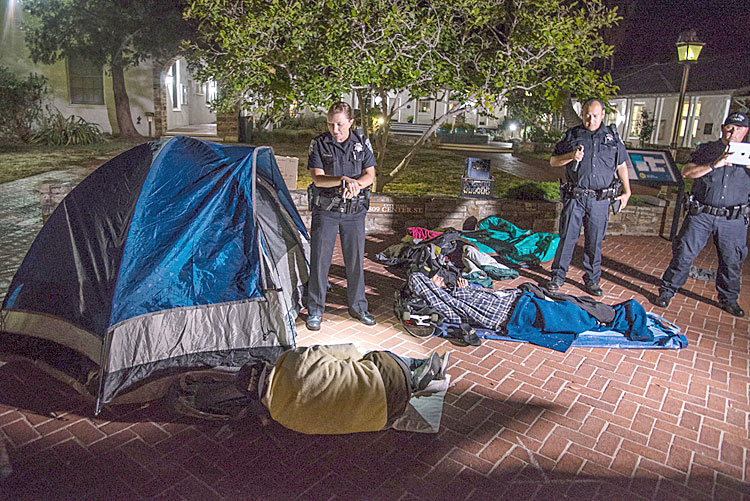One in 120 people are homeless in Santa Cruz County today.

The 2017 census shows 2,249 homeless individuals living in Santa Cruz County, a 14.5 percent increase since the 2015 census count of 1,964. The population is largely unsheltered, one in four are women and the number of unaccompanied children and transition-age youth is on the rise. More than half report suffering from a disabling condition and most are currently employed or looking for work.
“Homelessness is an issue that can touch our friends or families at any time,” Santa Cruz County Board of Supervisors Chairman John Leopold said. “As a community of compassion, we can and should work together to find lasting solutions to a very complex set of challenges. Everyone deserves to have a roof over their head and a chance at a better life.”
The 2017 Point-in-Time Count also highlights the plight of unaccompanied minors and transition-age youths. These combined populations more than doubled between 2015 and 2017, which is likely due in part to an increased focus on accurately counting these populations. Nearly all of them are unsheltered.
The data does not include information from the County Office of Education on student homelessness, which was unavailable during the Point-in-Time Count. An estimated 129 students are experiencing unsheltered homelessness, and there are 2,881 more students sharing a residence with another family who meet a more expansive definition of homelessness used by schools under the McKinney- Vento Act.
Through various programs and grants, the County has targeted veteran and family homelessness. Recent developments include: the Health Services Agency’s Whole Person Care pilot project, which will provide homeless persons with housing services, including housing search, navigation and maintenance support. The County also received a $2.2 million Youth Homelessness Demonstration Program grant, one of only 10 communities nationwide to receive these grants, to address youth homelessness. And the County also funds an incentive program to encourage landlords to rent to homeless families and individuals.
In identifying obstacles to permanent housing, 70 percent said they needed rental assistance, 67 percent said they needed more affordable housing, 49 percent said they needed assistance with moving costs and 44 percent said they needed help finding an apartment.
Twenty-seven percent of homeless individuals had experience with the foster care system. Half have been homeless for a year or more. Thirty-one percent are currently employed, while nearly half (43 percent) of unemployed homeless persons are looking for work.
Fifty-five percent said they suffered from a disabling condition, which can include psychiatric or emotional conditions (39 percent), alcohol or drug abuse (38 percent), physical disabilities (38 percent) Post-Traumatic Stress Disorder (32 percent), chronic health problems (31 percent), traumatic brain injury (18 percent) and HIV/AIDS (2 percent).
The increase is similar to homeless census count increases in other California counties, including Santa Clara (13 percent), Monterey (23 percent), Alameda (39 percent) and Los Angeles (23 percent). Approximately one in every 120 persons in Santa Cruz County is homeless.
There were a total of 600 individuals experiencing chronic homelessness. Seventy of those individuals were living in families experiencing homelessness. Nearly ninety percent of the chronically homeless population was living on the street.
“These numbers demonstrate the challenges that lay ahead of us,” Santa Cruz County Homeless Services Coordinator Rayne Marr said. “Leadership in the County and cities, along with community organizations, are taking an ‘All-In’ approach to solving this problem. The report shows this is a countywide problem, and it will take a countywide solution to address the underlying issues and help our most vulnerable residents.”
The purpose of the 2017 Santa Cruz County Homeless Point-in-Time Count and Survey is to produce a point-in-time estimate of people who experience homelessness in Santa Cruz County. The results of the street count are combined with the results from the shelter and institution count to produce the total estimated number of persons experiencing homelessness in Santa Cruz County on any given night.
The Point-in-Time Count was conducted on January 23, 2017.
•••
To read the Santa Cruz County All-In Plan to End Homelessness, go to: http://smartsolutionstohomelessness.org/wp-content/uploads/2012/08/HSP-FullReport-FINAL-Small.pdf.
To read the 2017 Santa Cruz County Point-in-Time Count, go to www.santacruzcounty.us.